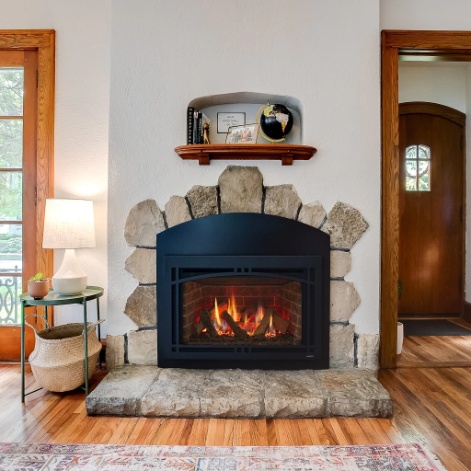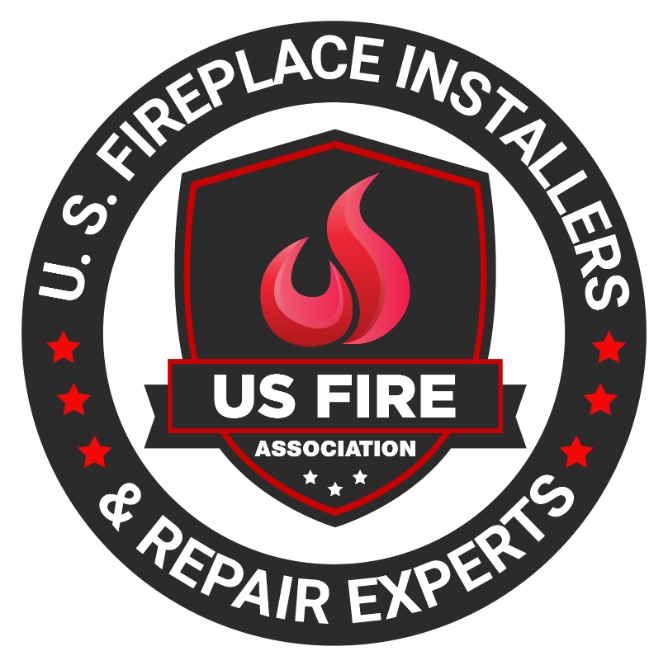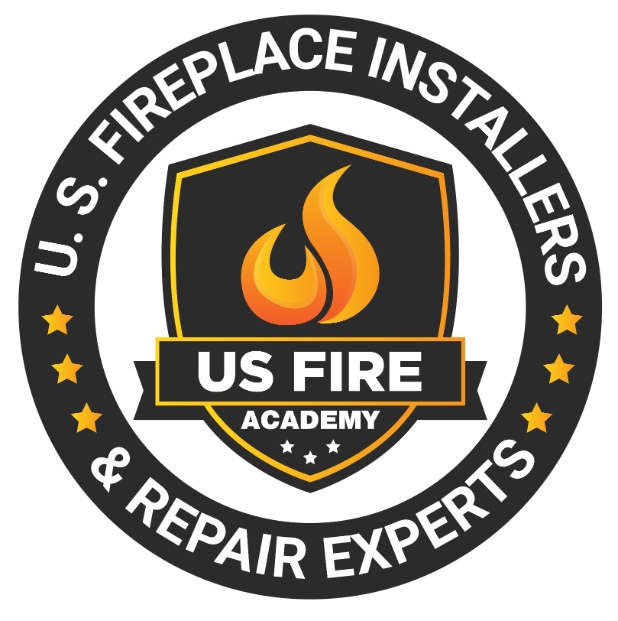Table of Contents
- 1 What Is a Fireplace Rope Seal?
- 2 Why Is It Important to Replace a Fireplace Rope Seal?
- 3 How Do I Know When to Replace a Fireplace Rope Seal?
- 4 What Materials Do I Need to Replace a Fireplace Rope Seal?
- 5 Step-by-Step Guide to Replacing a Fireplace Rope Seal
- 6 Tips for Maintaining a Fireplace Rope Seal
- 7 Common Mistakes to Avoid When Replacing a Fireplace Rope Seal
- 8 Benefits of Replacing a Fireplace Rope Seal
- 9 Other Uses for Fireplace Rope Seal
- 10 Frequently Asked Questions
Fireplace rope seals are essential components of a fireplace, ensuring a tight seal to prevent heat from escaping and improving energy efficiency.
In this article, we will explore the importance of replacing a fireplace rope seal, how to know when it’s time for a replacement, and the materials needed for the task.
We will also provide a step-by-step guide, tips for maintenance, common mistakes to avoid, and the benefits of replacing a fireplace rope seal.
Additionally, we will discuss other potential uses for fireplace rope seals. Stay tuned to learn more!
What Is a Fireplace Rope Seal?
A fireplace rope seal is a crucial component used to create a tight seal around the door of a fireplace or wood stove. It is typically made of insulating materials like gasket or rope sealant that can withstand high temperatures and prevent air leaks.
This seal plays a vital role in maintaining the heat retention within the fireplace or stove, ensuring that the warmth generated from the fire stays within the designated area. By effectively sealing off any gaps, the rope seal helps in enhancing energy efficiency by preventing heat loss and ensuring that the fire burns more efficiently.
The installation process of a fireplace rope seal is relatively straightforward, typically involving measuring the door opening, cutting the seal to the appropriate length, and affixing it securely in place. Once installed, the rope seal provides a durable and effective barrier against air leakage, ultimately contributing to a more cost-effective and environmentally-friendly heating solution.
Why Is It Important to Replace a Fireplace Rope Seal?
Replacing a fireplace rope seal is essential to ensure optimal heat retention and energy efficiency in your home. Over time, these seals can wear out, leading to air leaks, reduced efficiency, and potential safety hazards.
Regular maintenance and replacement of fireplace rope seals not only prevent heat loss but also play a crucial role in improving energy efficiency. By ensuring that the seal is intact and functioning properly, you can significantly reduce the amount of heat that escapes, ultimately saving on energy costs. This maintenance also enhances fire safety by keeping the fireplace operating at peak performance. A well-maintained fireplace seal can have a positive impact on other accessories such as glass doors and dampers, contributing to overall home improvement.
How Do I Know When to Replace a Fireplace Rope Seal?
You should consider replacing a fireplace rope seal if you notice gaps, cracks, or signs of wear during a routine chimney or fireplace inspection. These issues can lead to heat loss, drafty fireplaces, and leaking smoke.
Over time, a worn-out fireplace rope seal can prevent the fireplace from functioning efficiently, resulting in increased energy costs and reduced heating effectiveness. If left unaddressed, these issues may also pose safety hazards, such as the risk of carbon monoxide leaks or chimney fires.
Regular inspections play a crucial role in identifying and replacing damaged seals before they escalate into more serious problems, ensuring that your fireplace operates safely and optimally.
What Materials Do I Need to Replace a Fireplace Rope Seal?
To replace a fireplace rope seal, you will need materials such as high-temperature sealant, a suitable gasket or rope seal, adhesive for securing the seal, and the necessary tools for the sealing process. These materials are designed to withstand the heat and provide a durable, tight seal.
High-temperature sealants like silicone or refractory adhesive are recommended for their ability to withstand the extreme temperatures within a fireplace. When choosing a gasket or rope seal, opt for materials like fiberglass or ceramic that are heat-resistant. Adhesives such as stove cement or fireproof glue are essential for securing the seal in place. Tools such as a utility knife, screwdriver, and heat-resistant gloves are typically used during the sealing process to ensure proper installation and efficiency in sealing any gaps or leaks.
Step-by-Step Guide to Replacing a Fireplace Rope Seal
Replacing a fireplace rope seal can be done as a DIY project by following a simple step-by-step guide. From measuring the old seal to applying adhesive and installing the new rope, this process requires basic tools and supplies for an effective sealing technique.
- Start by disconnecting the power supply to the fireplace to ensure safety.
- Carefully remove the old rope seal using a utility knife or screwdriver, taking note of any gaps or damage in the sealant.
- Clean the area thoroughly to remove any debris or residue.
- Measure the length needed for the new rope seal, ensuring a snug fit.
- Apply a heat-resistant adhesive along the groove where the seal will sit, then press the new rope firmly into place.
- Allow the adhesive to dry completely before testing the seal for any leaks or gaps.
Step 1: Measure the Length of the Old Rope Seal
Before replacing the old rope seal, the first step is to measure the length accurately to ensure you purchase the correct replacement part. This measurement will determine the amount of new seal required for a snug fit.
One effective technique for measuring the rope seal is to unravel it carefully and lay it out straight, avoiding any kinks or twists.
Using a measuring tape, start from one end of the seal and measure all the way to the other end.
It’s crucial to take the measurement with precision, as even a slight error can lead to purchasing a seal that is either too short or too long.
Once you have the accurate measurement, opt for a replacement seal that matches the length closely to ensure a proper seal around the desired equipment.
Step 2: Remove the Old Rope Seal
Removing the old rope seal is the next step in the replacement process. Carefully detach the worn-out seal, ensuring that the area is clean and free of debris before proceeding. This step prepares the surface for the new sealant.
By thoroughly cleaning the area, you create an optimal surface for the new sealant to adhere properly, ensuring a tight and effective seal. Neglecting to clean the surface may result in poor adhesion, leading to potential air leaks and loss of efficiency in the fireplace.
The cleanliness of the seal area can impact the overall appearance and functionality of fireplace accessories, such as doors and dampers, by maintaining their proper alignment and operation.
Step 3: Clean the Area
Cleaning the area where the old rope seal was removed is crucial for ensuring a proper seal. Use appropriate cleaning tools and techniques to remove any residual sealant or debris, preparing the surface for the new seal installation.
Ensuring that the surface is completely clean is essential because any remaining residue can prevent the new seal from adhering properly. A thorough cleaning job will not only help in achieving a tight seal but also prevent potential issues such as air drafts or heat loss. By taking the time to clean the fireplace area diligently, you are investing in the longevity and efficiency of your fireplace system. Remember, a clean surface is the foundation for a successful seal that will keep your fireplace functioning optimally for years to come.
Step 4: Apply Adhesive to the Groove
Applying adhesive to the groove where the rope seal will be placed is essential for sealing cracks and ensuring a secure fit. Use a high-quality adhesive that can withstand the heat generated by the fireplace or wood stove.
The process of applying adhesive involves carefully filling the groove with the adhesive using a caulk gun or a specialized applicator. The adhesive creates a tight bond between the rope seal and the surface, preventing any air leaks or heat loss. It is crucial to select an adhesive specifically designed for high temperatures to ensure durability and long-lasting performance. A heat-resistant adhesive will maintain its integrity even when exposed to extreme heat, making it ideal for use in fireplaces, wood stoves, or other heating appliances.
Step 5: Install the New Rope Seal
Installing the new rope seal involves placing it securely in the prepared groove with the adhesive. Ensure that the seal fits snugly and is positioned correctly for optimal sealing effectiveness. Use appropriate tools to press the seal into place.
Before starting the installation process, it’s crucial to clean the surface where the seal will be placed to ensure better adhesion. Once the seal is positioned, gently push it into the groove using a roller or a flat tool, such as a putty knife, to prevent any air gaps. Applying consistent pressure along the seal helps achieve a tight fit. Be mindful not to stretch or twist the seal during installation to maintain its integrity. This secure placement not only maximizes the insulation properties of the seal but also helps in preventing heat loss and improving energy efficiency.
Step 6: Secure the Ends of the Rope Seal
Securing the ends of the rope seal is crucial for fire safety and maintaining a tight seal. Ensure that both ends are properly secured and connected to prevent any gaps or leaks that could compromise the insulation and sealing benefits.
Properly securing the ends of the rope seal not only enhances fire safety by containing potential flames within designated areas but also plays a significant role in preventing air leaks. These leaks can lead to energy inefficiency and higher utility costs, making it essential to maintain a durable and effective sealant. By paying close attention to how the ends of the rope seal are secured, you can ensure that your insulation remains intact and your building remains well-protected.
Tips for Maintaining a Fireplace Rope Seal
To extend the lifespan of your fireplace rope seal, consider regular maintenance and inspections. Keep an eye out for signs of wear or damage, and address any issues promptly to prevent heat loss and maintain optimal sealing effectiveness.
Inspect your fireplace rope seal at least once a year, preferably before the start of the cold season. Check for fraying, gaps, or compression in the seal, as these issues can compromise its efficiency. If you notice any damage, replace the seal promptly to avoid heat escaping and potential safety hazards. Consider using a high-temperature rope seal adhesive for secure attachment. Always follow the manufacturer’s guidelines and install the seal correctly when handling repairs to maximize its lifespan.
Common Mistakes to Avoid When Replacing a Fireplace Rope Seal
When replacing a fireplace rope seal, avoid common mistakes. These include leaving drafts, failing to seal gaps or cracks properly, and overlooking critical sealing areas. These errors can lead to inefficient insulation, air leaks, and compromised fireplace functionality.
To ensure a successful fireplace rope seal replacement, it is crucial to pay attention to sealing gaps effectively. This will prevent any air leaks. One common mistake is not inspecting the seal thoroughly for gaps where air can escape. Be sure to use high-quality rope seal and ensure comprehensive coverage around the door or window to maintain an airtight seal. Consider using adhesive or sealant to secure the seal firmly in place and prevent any gaps that could compromise the insulation of the fireplace.
Benefits of Replacing a Fireplace Rope Seal
Replacing a fireplace rope seal offers numerous benefits. This includes creating a tight seal that prevents heat loss, and ensuring a snug fit for improved insulation. As a result the overall sealing effectiveness is enhanced. These benefits contribute to better energy efficiency and a safer, more efficient fireplace.
By maintaining a proper seal, the fireplace operates more efficiently. This occurs by retaining heat within the firebox, allowing for gradual heat release into the room. This can lead to lower energy costs and reduced heating requirements, especially in colder months. A well-fitted rope seal minimizes the risk of smoke or carbon monoxide leakage, ensuring a safer indoor environment. With enhanced insulating properties, the fireplace can generate and maintain consistent warmth. As a result, this creates a cozy atmosphere while maximizing the heating potential of the fire.
Other Uses for Fireplace Rope Seal
Beyond fireplace applications, fireplace rope seals have versatile uses. People use them in insulation projects, sealing techniques, and other applications that require a durable and heat-resistant sealing material. Their effectiveness in maintaining tight seals and insulating properties make them valuable in various home improvement and renovation projects.
Industrial settings often utilize fireplace rope seals where heat management is crucial. Industries such as manufacturing, automotive, and aerospace employ these seals. They withstand high temperatures and provide reliable insulation.
In addition to traditional sealing roles, these rope seals are also valuable in DIY projects. This is because they create weatherproof barriers in windows and doors. The flexibility in application makes fireplace rope seals a versatile and practical solution. As a result, people can use them for a wide range of sealing needs beyond just fireplaces.
Frequently Asked Questions
1. What is a fireplace rope seal?
A fireplace rope seal is an insulating material made of gasket or rope sealant. The design creates a tight seal around fireplace or wood stove doors. It prevents heat from escaping, ensuring energy efficiency and effective heat retention within the fireplace.
2. Why is it important to replace a fireplace rope seal?
Replacing a fireplace rope seal is crucial for maintaining optimal heat retention and energy efficiency. Over time, these seals wear out, leading to air leaks and reduced efficiency, which can also pose safety hazards.
3. How do I know when to replace a fireplace rope seal?
You should replace a fireplace rope seal when you notice gaps, cracks, or visible wear. These signs indicate that the seal is no longer effective at preventing heat loss and could be a safety hazard.
4. What materials do I need to replace a fireplace rope seal?
To replace a fireplace rope seal, you will need a high-temperature sealant. Also, you will need a new rope seal made of materials like fiberglass or ceramic, adhesive. Finally, you will need tools such as a utility knife and screwdriver.
5. What is the step-by-step guide to replacing a fireplace rope seal?
To replace a fireplace rope seal, first, remove the old seal. Next, clean the area. Then, measure and cut the new seal to the proper length. Next, apply adhesive. Finally, install the new seal. Ensure the area is clean and the adhesive is fully dry before testing the new seal.
6. What are other uses for fireplace rope seals?
Rope seals serve a crucial role in various insulation and sealing projects that require durable, heat-resistant materials. People commonly use them in industrial settings and DIY projects to create weatherproof barriers.
Latest Articles

What Is An NG (Natural Gas) Indicator And Why You Need It For Your Fireplace
Table of Contents1 Understanding Natural Gas Fireplaces2 What is an NG Indicator?3 Importance of NG Indicators for Safety4 Types of NG Indicators5 Installation and Maintenance of NG Indicators6 Signs of a Faulty NG Indicator7 Frequently Asked Questions Natural gas fireplaces are a favored option among numerous homeowners due to their convenience and effectiveness. But, what is an NG (Natural Gas) indicator and why you need it for your fireplace? It is imperative to comprehend how they function and the significance of having an NG (Natural Gas) indicator for safety purposes. This article delves into the definition and significance of NG indicators. We will discuss the potential hazards associated with the absence of one and the various types of indicators accessible. Also, we will discuss installation and maintenance recommendations, and methods to recognize and rectify issues with malfunctioning indicators. Stay well-informed and ensure the safety of your home by referring to this exhaustive guide. Understanding Natural Gas Fireplaces Natural gas fireplaces serve as an efficient and convenient heating option for numerous households. They utilize natural gas as a fuel source to deliver consistent warmth and ambiance. How They Work and Why They Need NG Indicators The operation of natural gas fireplaces involves igniting natural gas to generate heat. This process requires diligent monitoring to ensure both safety and efficiency, a task facilitated by the use of NG indicators. NG indicators play a critical role in detecting potential gas leaks. They enable residents to promptly address and mitigate any associated hazards. Through continuous monitoring of gas levels and providing timely warnings and alerts, NG indicators uphold a secure indoor environment. It is imperative to ensure that these indicators function properly to facilitate the effective operation of natural gas fireplaces. This helps mitigate the inherent risks linked to gas leaks. What is an NG Indicator? An NG indicator is a specialized device equipped with advanced sensors and technology. It is specifically designed to detect natural gas leaks and monitor gas pressure in appliances, such as fireplaces. Definition and Purpose The NG indicator functions as a detector that monitors gas appliances for potential leaks. It provides essential functionality to ensure safety in households utilizing natural gas. These detectors play a crucial role in protecting residences by notifying occupants of dangerous gas leaks long before they escalate into perilous situations. Through continuous monitoring of gas levels in the vicinity, NG indicators offer an additional layer of protection. This is particularly important in properties that rely on gas-operated fireplaces or stoves. These devices not only help avert potential disasters but also enhance the overall peace of mind of homeowners. They assure them that their living spaces are equipped with reliable safety features. Importance of NG Indicators for Safety Natural gas indicators are essential for maintaining safety in households equipped with natural gas appliances. These devices serve as a proactive measure to promptly detect gas leaks. This offers homeowners a sense of security and assurance. Potential Dangers of Not Having an NG Indicator The absence of an NG indicator in residences equipped with natural gas appliances can pose significant hazards. This includes the risk of undetected gas leaks , carbon monoxide poisoning , and pilot outages that may lead to dangerous situations. These potential risks can profoundly impact indoor air quality. They directly influence the health and safety of individuals residing in the household. Undetected gas leaks can go unnoticed, gradually permeating the air and creating a potentially explosive environment. Insufficient ventilation from undetected exposure to carbon monoxide can lead to serious health complications. These range from mild symptoms such as dizziness to fatal poisoning. Without proper monitoring from an NG indicator, families are left susceptible to these concealed threats. This underscores the critical importance of implementing proactive measures to mitigate such risks. Types of NG Indicators Indicators for Natural Gas (NG) are available in diverse types. Each presents distinct detection capabilities tailored to specific requirements, encompassing both manual and automated alternatives. Manual vs. Automatic Indicators Manual NG indicators require user intervention for monitoring gas levels and identifying leaks. On the other hand, automatic indicators employ sophisticated technology to deliver continuous, real-time monitoring. This heightened efficiency and oversight enhance safety protocols. Conventional manual indicators rely on individuals to physically inspect and evaluate gas levels periodically. This renders them more susceptible to human errors. Conversely, automatic indicators feature sensors capable of promptly detecting even the most minute fluctuations in gas levels. This establishes a more dependable and precise monitoring mechanism. Automatic indicators can activate alerts and shut-off systems upon detecting a leak. This ensures immediate action to avert potential hazards. This advanced technology enhances safety protocols and instills a sense of command and assurance among users. Installation and Maintenance of NG Indicators The reliable and accurate performance of NG indicators necessitates proper installation and consistent maintenance. This often entails professional installation and adherence to recommended service guidelines. Proper Installation and Regular Maintenance Tips The proper installation of NG indicators involves adhering to the specifications in the user manual. Maintenance protocols entail strict adherence to a predetermined maintenance schedule to ensure sustained operational efficiency. During the installation phase, it is imperative to verify that the NG indicators are securely affixed in the designated location as stipulated by the manufacturer. Crucial steps include confirming power source compatibility and ensuring proper grounding of the device to optimize performance. Calibration of the indicator must be executed meticulously to ensure precise readings. Regarding maintenance, essential practices include regular inspection for signs of wear, thorough cleaning of the indicator components, and routine functionality tests. By allocating time to a consistent maintenance regimen, the NG indicator can operate with optimal efficiency over an extended duration. Signs of a Faulty NG Indicator Recognizing indicators of a malfunctioning NG indicator is essential for upholding safety and performance standards. Inaccuracies and detection issues can undermine the efficacy of these devices. Identifying and Addressing Issues The process of identifying and addressing issues related to NG (natural gas) indicators requires a systematic troubleshooting approach. This ensures their optimal performance

What You Need To Know About Gas Log Set Safety And Installation Considerations
Table of Contents1 Understanding Gas Log Sets2 Safety Considerations for Gas Log Sets3 Installation Guidelines for Gas Log Sets4 Maintaining and Troubleshooting Gas Log Sets5 Frequently Asked Questions Gas log sets are a favored option among homeowners seeking to enjoy the comfort and atmosphere of a conventional fireplace without the inconvenience of wood. This article tells you what you need to know about gas log set safety and installation considerations. Before incorporating one into your residence, it is imperative to understand the safety considerations associated with their use. This discussion delves into the potential hazards linked with gas log sets. It presents crucial precautions to uphold the safety of your home. Also, it outlines proper installation procedures and offers insight into common errors to avoid. Finally, it provides advice on maintenance and troubleshooting. Gain comprehensive knowledge on gas log set safety and installation considerations. Understanding Gas Log Sets Comprehending gas log sets is essential for individuals seeking to elevate their fireplace experience, and for gas lag set safety and installation. These heating appliances can operate on either natural gas or propane. In addition, they are available in a range of styles, including vented, ventless, and vent-free options. They provide an array of benefits and customization opportunities through various fireplace accessories. What are Gas Log Sets? Gas log sets are meticulously crafted artificial logs. They are designed to imitate the appearance and functionality of authentic wood logs within fireplaces. These gas log sets typically consist of ceramic or refractory concrete logs that have been skillfully molded and painted. This allows them to replicate the natural grain and texture of real wood. The logs are arranged in various configurations within the fireplace. They establish a realistic and welcoming ambiance. In addition to the logs, gas log sets often include fireplace accessories such as glowing embers. Accessories also include decorative stones, and even pine cones to enhance the overall aesthetic appeal. Homeowners can select from an array of placement options. These include traditional wood stack, cascading driftwood, or a contemporary geometric arrangement. Homeowners can align their preferred style and design preferences. Safety Considerations for Gas Log Sets Safety considerations for gas log sets are of utmost importance to guarantee a secure and pleasant fireplace experience. It is essential to address potential hazards such as carbon monoxide exposure, gas leaks, and fire safety to maintain a safe environment for homeowners. Potential Hazards and Precautions Gas log sets come with potential hazards that must be taken seriously, including the risks of gas leaks, carbon monoxide poisoning, and fire incidents. It is imperative to establish and adhere to rigorous safety measures to ensure the well-being of individuals and properties involved in the use of gas log sets. Gas leaks represent a significant hazard when utilizing gas log sets. They can result in the accumulation of combustible gas within the premises, heightening the possibility of explosions or fires. Carbon monoxide, an insidious gas generated during incomplete combustion, poses a grave threat due to its colorless and odorless nature, making it undetectable without proper monitoring. To address these risks effectively, it is vital to install carbon monoxide detectors and gas leak sensors in the vicinity of the gas logs. Routine maintenance checks on the gas log system, including cleaning and inspection procedures, are critical to ensure safe operations and the prompt identification of potential issues. In case of a gas leak or suspected presence of carbon monoxide, immediate evacuation of the affected area is paramount, followed by prompt contact with emergency services. Recognizing the distinct odor of rotten eggs associated with natural gas can serve as an early warning sign, prompting swift actions to avert any potential accidents. Installation Guidelines for Gas Log Sets The installation of a gas log set necessitates meticulous planning and strict adherence to specific guidelines. This includes verifying a secure gas connection, ensuring proper gas lines are in place, and complying with local building codes. Often, the complexity of these requirements may require the expertise of a certified technician. Proper Installation Techniques The appropriate installation procedures for gas log sets involve the secure connection of gas lines, meticulous adherence to installation manuals, and strict compliance with local building codes. It is imperative to prioritize the guarantee of secure gas connections to avert leaks and potential safety hazards. During the installation of gas log sets, utilizing suitable sealants and fittings is essential to establish a tightly sealed connection. The correct installation of gas lines is critical for both the safety and operational efficacy of the gas log set. Reference to the installation manual is highly advisable for detailed, step-by-step guidance to prevent inaccuracies and ensure the successful establishment of the gas log set. Consistently adhering to building codes and regulations upholds safety standards. Seeking guidance and confirmation from a certified technician before and after installation can offer invaluable support and assurance throughout the process. Common Installation Mistakes to Avoid It is imperative to avoid common installation errors to ensure the secure and effective operation of gas log sets. This includes verifying proper gas connections and compliance with building codes. Improper gas connections can result in leaks and potential hazards, underscoring the importance of verifying the tightness and correct alignment of all fittings. Failure to adhere to building codes can lead to structural complications, penalties for non-compliance, or even safety concerns. To prevent these oversights, it is advised to consult the manufacturer’s installation guidelines and strictly adhere to local regulations. Engaging a certified technician for the installation of gas log sets guarantees that the procedure is carried out accurately and securely. This provides assurance that the system is functioning as intended. Maintaining and Troubleshooting Gas Log Sets Regular maintenance and troubleshooting of gas log sets are imperative to uphold their optimal performance and safety. This includes thorough examination of the pilot light, pilot assembly, and other gas appliances to preserve heating efficiency and promptly resolve any arising issues. Tips for Maintenance and Repair Ensuring the proper maintenance of your gas log set necessitates conducting

Key Considerations For Using Compressed Liquid Propane In Fireplace Installation
Table of Contents1 What is Compressed Liquid Propane?2 Benefits of Using Compressed Liquid Propane in Fireplaces3 Safety Precautions for Installing Compressed Liquid Propane Fireplaces4 Installation Process for Compressed Liquid Propane Fireplaces5 Maintenance and Care for Compressed Liquid Propane Fireplaces6 Alternative Fuel Options for Fireplaces7 Frequently Asked Questions If you are contemplating the use of compressed liquid propane in your fireplace installation, this discussion will delve into the advantages of adopting this alternative fuel option. These benefits include enhanced efficiency, cost savings, and important safety precautions to consider. Furthermore, a detailed step-by-step guide on the installation process will be provided, along with recommendations for maintenance and care. A comparison of various fuel options for fireplaces will also be conducted to assist you in making an informed decision. We encourage you to stay engaged to gain insights into optimizing your fireplace’s capabilities with compressed liquid propane. What is Compressed Liquid Propane? Compressed Liquid Propane is a versatile energy source contained in a high-pressure propane tank. It finds extensive utility in both residential and commercial settings, prominently including fireplaces. Recognized for its convenience and efficiency, Compressed Liquid Propane emerges as a favored option for heating residential spaces and facilitating culinary pursuits across various environments. Additionally, it serves as a viable fuel substitute in vehicular contexts, portable cooktops, and outdoor grilling scenarios due to its propensity for clean combustion. The attribute of portability, coupled with ease of storage, positions Compressed Liquid Propane as an optimal energy source for individuals residing off the conventional grid. It is also great for engaging in outdoor activities such as camping and recreational vehicle (RV) travel. Moreover, the high energy density inherent to Compressed Liquid Propane renders it a dependable choice for sustaining generators during instances of power disruptions. Benefits of Using Compressed Liquid Propane in Fireplaces Utilizing Compressed Liquid Propane for fireplace installation presents several benefits. These include enhanced fuel efficiency, convenience, cost-effectiveness, and a favorable environmental footprint. These attributes render it a recommended option for heating solutions, applicable to both on-grid and off-grid settings. Efficiency and Cost Savings The utilization of Compressed Liquid Propane in fireplaces offers significant advantages, notably in terms of high fuel efficiency and cost-effectiveness. These attributes are underscored by the exceptional BTU rating and overall heating efficiency of Compressed Liquid Propane. The elevated fuel efficiency exhibited by Compressed Liquid Propane fireplaces necessitates less fuel to generate the same level of heat compared to traditional wood-burning fireplaces or electric heating systems. Consequently, homeowners can realize cost savings on their heating expenditures over an extended period. Moreover, the clean-burning characteristics of propane minimize maintenance costs linked to soot and ash cleanup. This further enhances the cost-effectiveness of employing propane fireplaces. Safety Precautions for Installing Compressed Liquid Propane Fireplaces Ensuring safety is of utmost importance during the installation of Compressed Liquid Propane fireplaces. This requires strict adherence to safety regulations, meticulous attention to proper ventilation requirements, careful control of ignition sources, and the incorporation of carbon monoxide and gas leak detection systems. Important Safety Measures Essential safety protocols for the installation of Compressed Liquid Propane fireplaces encompass adherence to fire safety regulations. Engaging in professional assessments and employing sophisticated gas leak and carbon monoxide detection mechanisms is crucial. Professional evaluations play a critical role in identifying any prospective hazards or irregularities within the fireplace infrastructure. These assessments are vital in ensuring the operational integrity of all components and compliance with safety protocols. Routine inspections serve to forestall potential fire incidents, gas discharges, or carbon monoxide emissions that could pose significant threats to both the property and individuals in the vicinity. The utilization of advanced gas leak and carbon monoxide detection systems serves as an additional safeguard by promptly notifying occupants of any elevated levels of these hazardous gases. Installation Process for Compressed Liquid Propane Fireplaces The installation procedure for Compressed Liquid Propane fireplaces encompasses several critical steps. These include: Adhering to installation guidelines Correctly positioning the propane tank Ensuring precise gas line installation Optimizing heat output Monitoring pressure regulation Establishing the pilot light Step-by-Step Guide The installation process of Compressed Liquid Propane fireplaces involves a systematic approach. This begins with the construction of the firebox, followed by the installation of the gas control valve, setup of the ignition system, design of the flue, and verification of a suitable combustion air supply. The construction of the firebox assumes critical importance as it serves as the foundation of the fireplace structure. It securely holds the combustible materials in place. Subsequently, the gas control valve plays a key role in managing the propane flow, guaranteeing safe and efficient operation. The installation of the ignition system facilitates convenient and reliable fire initiation. Designing the flue is a necessary step to direct exhaust gases outside, thus preventing their accumulation indoors. Moreover, ensuring a proper combustion air supply is essential to sustain optimal burning conditions and enhance fuel consumption efficiency. Each component contributes significantly to the functionality and safety of the fireplace installation process. This underscores the importance of meticulous attention to detail and adherence to established protocols. Maintenance and Care for Compressed Liquid Propane Fireplaces Consistent maintenance and attention to Compressed Liquid Propane fireplaces are imperative to guarantee their optimal functionality. This includes adherence to prescribed maintenance protocols, regular chimney upkeep, prevention of soot accumulation, and scheduling of routine propane deliveries and professional inspections. Tips for Keeping Your Fireplace in Good Condition For the maintenance of your Compressed Liquid Propane fireplace, it is essential to conduct regular checks on ignition sources. Monitor flame appearance, clean the gas burner and pilot assembly, and verify the correct operation of the safety shut-off valve. The inspection of ignition sources requires a detailed examination of the electronic igniter. This helps identify any signs of damage or corrosion and ensures proper sparking upon activation. Monitoring flame appearance involves observing a consistent blue flame with minimal flickering, which signifies efficient combustion. Cleaning the gas burner and pilot assembly can be performed using a soft brush or compressed air to eliminate any dirt or debris that may

